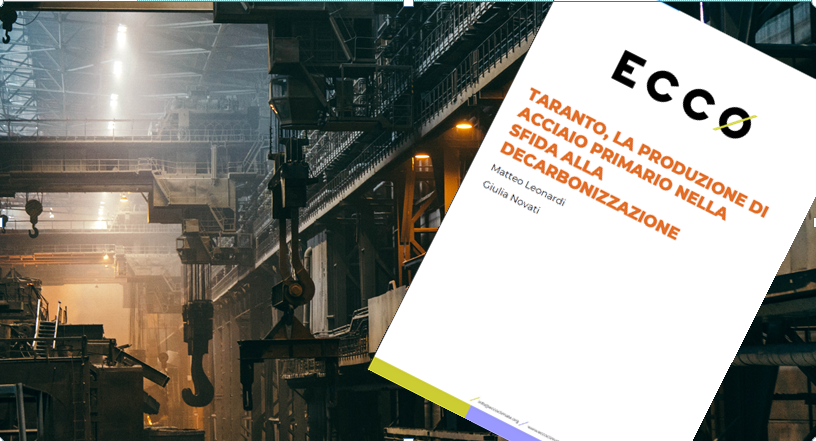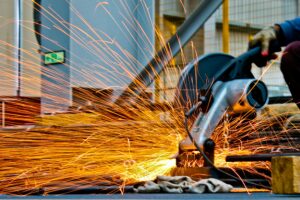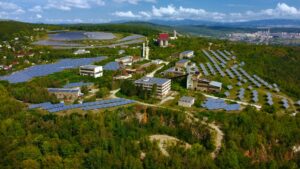In this report, ECCO takes an in-depth look at primary steel production in Italy, analyzing the specific case of the only Italian plant currently producing it, namely the Taranto steel plant.
Download the full report here.
Maintaining primary steel production in the decarbonization process is an important commitment to the development of the national economy.
Italy is the second largest steel producer in Europe and the 11th largest in the world. In 2019, 23.2 Mt of steel was produced in our country: 82% is recycled steel, produced by melting mainly ferrous scrap in electric arc furnaces; 18% is primary steel, i.e., produced by full cycle from iron ore at the Acciaierie d’Italia plant in Taranto (Ex ILVA).
In 2020, the former ILVA produced 3.4 million tons of steel, emitting 8.3 Mt of CO2 into the atmosphere. In addition to greenhouse gases, several pollutants are also emitted, including dust, dioxins, and polycyclic aromatic hydrocarbons (some of which are potentially carcinogenic), mainly from the processing of coal and the use of its derivatives.
The imminent publication of Taranto’s new industrial plan, linked to the changed corporate structure, represents a unique opportunity to plan interventions and reconversion solutions that can combine the economic and social sustainability of investments with the environmental and climate sustainability of the project. Although today, internationally, the production of so-called ‘green steel’ is still in its infancy, the particular historical circumstances offer the possibility for the Taranto site to represent a ‘flagship’ green steel project in Europe and the world, anticipating and driving change and bringing to the market a product whose demand can only grow in the future.
Based on our insights, it emerges that DRI (Direct Reduced Iron) technology is the solution that best combines the different variables involved and enables the complete decarbonization of the primary steel production process to be achieved in the long run.
The reconversion of the Taranto plant from coal-fired blast furnaces to natural gas-fired DRI is estimated to require an investment of 2.5 billion euros, fostering an immediate benefit in environmental terms and keeping the quality of the final product unchanged.
The end point of the complete conversion involves the use of green hydrogen. Although currently technologies for hydrogen production and storage are not yet sufficiently developed and still have too high costs, they are expected to decrease significantly in 2030 (from 8.2 – 8.9 to 5.5 – 6.2 billion euros). This is why it is necessary for public investment to be directed toward the DRI option and hinged in a long-term national strategy, in fact the only viable way to achieve climate neutrality goals.
From the employment point of view, the reduced labor requirements of the system formed by pre-reduction and the electric steel mill (DRI and EAF) can be offset and diversified through coordinated development of alternative employment outlets, such as those in the green hydrogen and renewable energy supply chains, as well as with the expansion of the site’s in-house steel finishing facilities.
Download the full report here.
IMAGE CREDIT Ant Rozetsky on Unsplash






